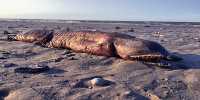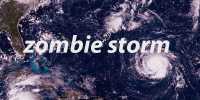Antarctica is considered to be the largest, most ancient remaining wildlife in the world. Yet since its official discovery 200 years ago, the continent has seen acceleration and potentially effective human activity.
A team of researchers led by Monash University, including Dr. Bernard Kotzi from the Global Change Institute at the University of Witwatersrand in Johannesburg (Wits University), has changed all this. Using a data set of 2.7 million humanitarian activity records, the team showed how widespread human use in Antarctica has been over the past 200 years. The research was published in the journal Nature. Co-author from the Global Change Institute at the University of WhitewaterSrand.Bernard Kotji, co-author. Bernard Quetzi, co-author of WhitewaterSrand, Dr. Bernard Quetzi recorded 2.7 million human activities on
the Antarctic continent from 1819 to 2018 to determine the extent of its overlap with the biodiversity of Winter water. Said in a statement.
The extent to which this activity spread across the continent has never been resolved. We know that there is no city, agriculture, or industry in Antarctica. But we never had an idea of where a man was, how the continent remained untouched or largely obsolete, and how much work was done to protect biodiversity in this vast, unbroken region.
In areas that were often thought of as remote, we showed that in reality, human activity has increased significantly, especially in the ice-free and coastal areas where most of its biodiversity is found. This means that ‘desert’ regions do not capture many of the important biodiversity sites on this continent, but there is an
opportunity to conserve the last part of the forest. The study found that 16% of the continent’s important bird sanctuaries, internationally recognized bird sanctuaries, are located in neglected areas, and most of the total neglected areas
are represented in the Antarctic Special Protected Areas Network.
High Human Impact RS, for example, some RSs where people build research centers or go for tourism, offsets overlap with RS important for biodiversity. When we think of Antarctica, our minds instantly turn to penguins, and still, only 16 percent of their habitat and many other birds are internationally protected,
with many tourist and research centers overlapping important areas for biodiversity. Some of the continent’s risks are uninterrupted, such as growing infrastructure and plant trampling. Others are less polluted, such as contamination, microbial contamination, and the spread of native and exotic
species.
“Informatics using larger data sets provides new quantitative insights into long-proven proven thorny questions for environmental policymakers,” says Steven Kaun, a co-author based at Monash University.”
This work provides innovative ways to help Antarctic treaty teams take pioneering steps to protect Antarctica’s wildlife. The transdisciplinary team providing this work includes researchers from Australia, the Netherlands, New Zealand, and South Africa.
















